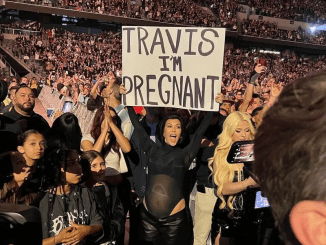The gig economy has transformed how we receive services like food delivery, but it has also sparked debates about tipping culture. Recently, a DoorDash driver made waves online by eating a customer’s food because they didn’t leave a tip, stirring up a heated conversation about tipping, entitlement, and job ethics.
In a viral TikTok video, the driver didn’t just deliver the food. Instead, he helped himself to the meal, unapologetically stating that customers who don’t tip don’t deserve his services. This bold move left the internet split, with some finding it amusing and others expressing outrage. But what does this incident say about tipping, service expectations, and professional behavior?
The Incident That Sparked Debate

Waiting for food delivery can be an anxious experience, especially when you’re craving your favorite meal. Imagine the excitement when you hear the knock on the door, only to discover that your food has been tampered with. This scenario became a reality for one DoorDash customer after a delivery driver chose to dig into their order after noticing there was no tip.
In the now-viral video, the driver, who goes by @sidehustleaddict on TikTok, showcased the bag of food while seated in his car. Rather than driving to the customer’s home, he started ranting about non-tippers and eventually proceeded to eat a steak breakfast chalupa from the order. His words? “No tip, I eat!”
Tipping in the Gig Economy: A Controversial Practice
Tipping has always been a divisive subject, particularly in industries like food delivery, where workers often rely on tips to make a livable wage. While many argue that tipping is essential for providing a fair income, others question why the burden of payment falls on the customer rather than the employer.
The DoorDash driver’s actions drew attention to the uncomfortable dynamic between drivers and customers in today’s gig economy. Should customers be expected to tip every time? And if they don’t, does that give delivery workers the right to withhold or tamper with service?
The Ethics of the DoorDash Driver’s Actions
It’s clear that not everyone agreed with the driver’s approach. Although some TikTok viewers laughed at the stunt, others condemned his actions as unprofessional and unethical. After all, when you accept a job, you’re expected to complete it, regardless of whether or not a tip is included.
One commenter pointed out, “Hope you get fired bro – idk why you’d flex not doing your job.” And they’re not alone in their thinking. Refusing to deliver food because of a lack of tips isn’t just poor customer service; it’s a breach of the trust that customers place in delivery platforms like DoorDash.
DoorDash’s policy states that tipping is optional, yet many drivers feel entitled to extra compensation, particularly in low-paying gigs. This creates friction between customers and drivers, with incidents like this only fueling the fire.
The Customer’s Perspective: To Tip or Not to Tip?
From a customer’s standpoint, tipping is often seen as an added bonus for good service, not a mandatory payment. Some argue that the delivery fee charged by companies like DoorDash should cover the driver’s compensation, leaving tipping as an optional gesture for exceptional service.
However, DoorDash drivers, like many gig workers, depend on tips to supplement their income. This disconnect between customer expectations and driver needs leads to dissatisfaction on both sides. As one driver told Business Insider, “Customers should tip based on the size of the order,” suggesting that tips should correlate with the effort and size of the delivery.
But when tipping becomes expected rather than appreciated, customers may start to feel resentful, particularly if they’re already paying delivery fees, service fees, and taxes on top of their order.
How Much Should You Tip a DoorDash Driver?

So, what’s a fair tip for food delivery services? According to interviews with several DoorDash drivers, a reasonable tip is generally between 15% to 20% of the total order. This is similar to what you might leave at a sit-down restaurant, reflecting the effort involved in ensuring your food arrives hot and fresh.
Drivers argue that tipping based on the size and complexity of the order is a fair practice. For instance, larger orders or deliveries during bad weather conditions may warrant a higher tip. However, the amount you tip ultimately depends on your budget, the quality of service, and local tipping customs.
The Bigger Picture: Tipping, Gig Work, and Fair Compensation
At its core, this controversy highlights the broader issues within the gig economy. Companies like DoorDash rely on independent contractors who are often paid low wages, with tips forming a crucial part of their earnings. Without a steady wage, drivers are left to rely on customer generosity to make ends meet.
But the gig economy model raises important questions: Should companies like DoorDash pay drivers more so they don’t have to rely on tips? And if tipping is optional, how can companies ensure that customers and drivers feel satisfied with the transaction?
This particular incident serves as a reminder that tipping culture in the U.S. is complex and often controversial. While customers have the right to withhold tips, drivers may feel justified in taking matters into their own hands, even if it means crossing ethical lines.
Conclusion: A Divided Opinion on Tipping and Delivery Services
The DoorDash driver who ate a customer’s food over a lack of tipping has certainly divided opinions. On one side, you have those who feel that tipping is an essential part of good service, while others argue that delivery drivers should be compensated adequately by their employers, regardless of tips.
This event has sparked a larger conversation about the role of tipping in the gig economy, and whether drivers have the right to expect tips for performing their duties. Ultimately, this viral incident highlights the need for clearer tipping practices and better communication between drivers, companies, and customers to prevent such situations in the future.


